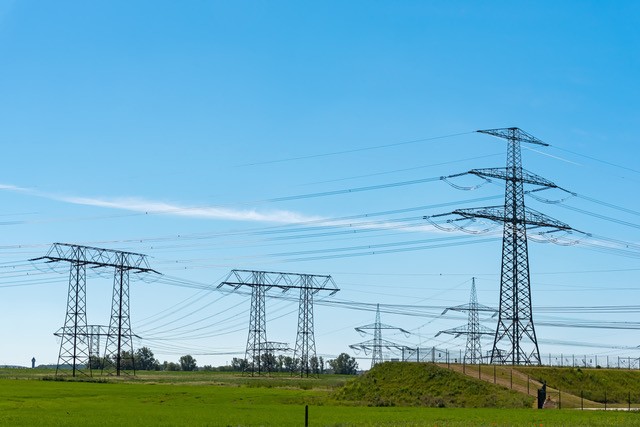
Policy Director
SHARE

The business model for electrical generation companies, including PREPA, traditionally known as “build and grow,” is based on (1) the construction of ever larger and more efficient generating plants using cheap fossil fuels and (2) a constant increase in electrical consumption. This model began to fail, however, in the 1970s due to limitations on the efficiency achievable in the generation of electricity, the increase in the price of fossil fuels, new environmental regulation, a reduction in the demand for electrical power, and the entrance of new generation technologies using renewable energy sources.
To put it another way, the model for producing and selling electricity changed 45 years ago, but in Puerto Rico PREPA went on doing things the way it had always done them. So it should not surprise us that PREPA needs to be radically transformed.
But the reform of the energy system in Puerto Rico has to be well-thought-out, strategic, and it must follow a logical sequence, especially when PREPA is facing a number of simultaneous challenges: the rebuilding of the electrical system after Hurricane Maria, the restructuring of its debt under the procedures of Title III of PROMESA, a substantial decline in the demand for its services, and the possible privatization, total or partial, of the electrical system that has been administered and operated as a monopoly for more than seventy years.
Given this situation, we recommend implementing the follow process for transforming our electrical system:
First, the Energy Regulatory Commission for Puerto Rico, working in conjunction with PREPA, should update the 2016 Integrated Resource Plan to take into consideration the meteorological events of 2017 and establish goals and objectives for the generation capacity needed, the structure of rates and prices to be charged consumers, the standards for rebuilding the transmission and distribution network and for incorporating renewable energy into that network, and other important objectives.
Second, on the basis of the Integrated Resource Plan, determine the modality to be employed for privatization and the optimal market structure for achieving the goals and objectives set forth in the Plan.
Third, the Energy Commission should establish guidelines to govern the transformation process. Among these guidelines should be the qualifications to be required of the companies who wish to take part in the process. Here, it is important to take into account the bidder’s corporate reputation, its financial situation, its performance in other jurisdictions, and whether it has had legal problems due to breach of contract or accusations of corruption in other locations, among other factors.
Fourth, the Regulatory Commission should establish clear criteria to be used in granting the contracts. Among other criteria, it is important to focus on the firm’s technological capacity, the managerial team’s experience, the estimated costs of production, and the financial solidity for making the necessary capital investments. If the contracts are let to companies without adequate experience and resources, the result will surely be a total failure of the privatization process.
Fifth, after establishing the appropriate technical parameters (via the Integrated Resource Plan), the optimal market structure for Puerto Rico, the qualifications to be required of the companies taking part in the process, and the criteria for granting the contracts, the Puerto Rico Authority for Public-Private Partnerships can proceed to negotiate the contracts necessary for implementing the transformation of Puerto Rico’s electrical system.
Sixth, the Puerto Rico Energy Commission should issue a certificate of compliance as a condition precedent to the signing of any contract or transaction. In the United States this requirement is common in sales of such highly regulated entities as financial institutions, telecommunications companies, and radio and television companies. The purpose of this requirement is to ensure, through a review by the Energy Commission, that the transaction negotiated complies with the previously established criteria.
At that point, implementation of the new electric-market structure in Puerto Rico can begin.

Unfortunately, Senate Bill 860 contains several clauses that limit or dilute the Energy Regulatory Commission’s authority in the context of the transformation of PREPA.
For example, Section 6(c) and Sections 8, 11, and 12 of the bill limit the Commission’s power to (1) regulate the rates and charges that a contracting entity can impose; (2) demand that the contracting party comply with any process, requirement, approval, or review by the Energy Regulatory Commission of Puerto Rico, and (3) demand that any contracting entity comply with the provisions of any Integrated Resource Plan. Likewise, the bill now before the Senate eliminates the applicability of any regulation issued by the Commission affecting PREPA’s Transactions and also eliminates the requirement that any contract let with regard to any PREPA Transaction be evaluated, approved, or endorsed by the Energy Commission.
Implementation of these limitations would be a grave public policy error. Indeed, in the words of the Acting Inspector General of the Department of Homeland Security (DHS) in a recent congressional hearing, it would constitute “a recipe for disaster.” I think the last thing we want in Puerto Rico after so much suffering caused by the slowness in restoring the island’s electric service is to provoke another disaster in the electrical system because of inadequate regulation and the unsatisfactory functioning of our political institutions. We should remember the energy crisis in California in 2000-2001 caused by a weak regulatory framework that was taken advantage of by Enron in order to raise its rates astronomically. This crisis resulted in rolling blackouts across the state due to human error, not natural events.
In summary, adequate regulation of the market is essential if we are to obtain the desired results with respect to modernizing our electrical system, incorporating renewable sources of energy into our generation system, and reducing the cost per kilowatt-hour.
The original Spanish version was published in El Nuevo Día on April 15th, 2018.
